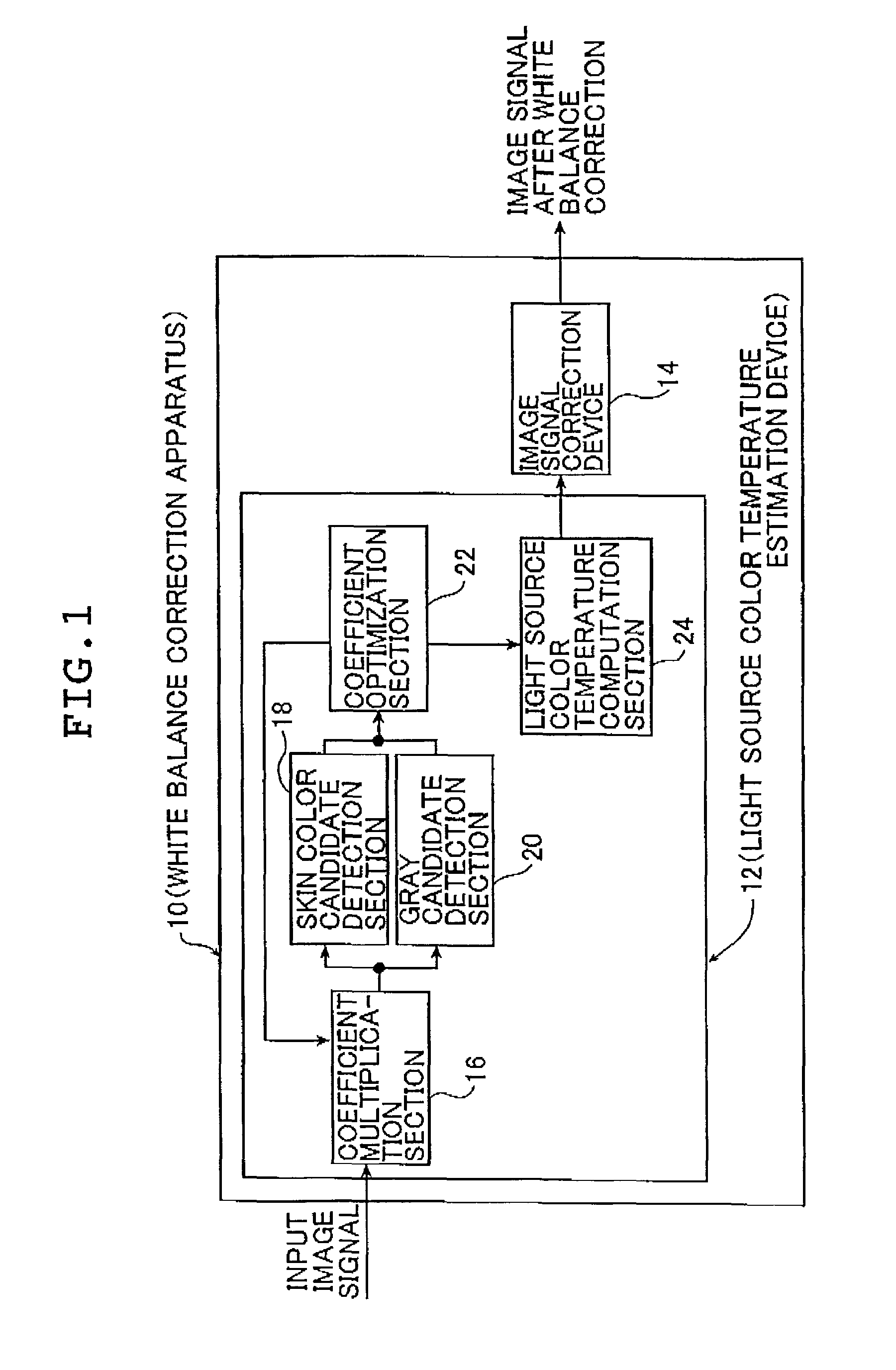Method and apparatus for correcting white balance, method for correcting density and recording medium on which program for carrying out the methods is recorded
a technology for color images and white balance, applied in color signal processing circuits, instruments, colour separation/tonal correction, etc., can solve problems such as inability to reliably obtain a satisfactory image without a function, and the condition of original image photography on negative films is not always uniform
- Summary
- Abstract
- Description
- Claims
- Application Information
AI Technical Summary
Benefits of technology
Problems solved by technology
Method used
Image
Examples
example 1
[0109]The performance of the above-described white balance correction method was tested when prints were formed from 309 frames of DSC images obtained by picture-taking with typical two DSC models from Fuji Photo Film Co., Ltd. For comparison with the prints formed in accordance with the present invention, original images (prints which were output without correction after AWB in the DSCs) and prints which were obtained by performing on the images from the DSCs white balance correction based on the conventional art were prepared. The prints evaluated were sorted into 3 groups; good ones (X), unsatisfactory ones (Y), and defective ones (Z). Only the good ones (X) were counted as passed items.
[0110]First, 8-bit DSC image signals R, G, and B were converted into subject-linear signals R0, G0, and B0, as described below.
[0111]8-bit DSC image signals R, G, and B obtained by picture-taking with the DSC are processed as described below. First, subject-linear signals Ro, Go, and Bo generated ...
example 2
[0121]In Example 1, the names of DSCs were known and the spectral sensitivity and the color processing algorithm were also known. However, if the white balance correction method of the present invention is used as printing software, it is desirable to ensure applicability to correction of DSC images formed by unknown models (or to ensure robustness).
[0122]In Example 2, a white balance correction test was made with respect to 309 frames of DSC images obtained by picture-taking with typical two DSC models from Fuji Photo Film Co., Ltd, which are same as those used in Example 1, and 240 frames of images obtained by picture-taking of the same scenes (16 frames) with fifteen unidentified models from other manufactures.
[0123]In this example, white balance correction in accordance with the present invention was performed under the assumption that all models were DSCs having ideal spectral sensitivities, because, even if the model cannot be identified, the performance of any model can be ap...
PUM
| Property | Measurement | Unit |
|---|---|---|
| color temperature | aaaaa | aaaaa |
| temperature | aaaaa | aaaaa |
| color temperature | aaaaa | aaaaa |
Abstract
Description
Claims
Application Information
 Login to View More
Login to View More - R&D
- Intellectual Property
- Life Sciences
- Materials
- Tech Scout
- Unparalleled Data Quality
- Higher Quality Content
- 60% Fewer Hallucinations
Browse by: Latest US Patents, China's latest patents, Technical Efficacy Thesaurus, Application Domain, Technology Topic, Popular Technical Reports.
© 2025 PatSnap. All rights reserved.Legal|Privacy policy|Modern Slavery Act Transparency Statement|Sitemap|About US| Contact US: help@patsnap.com



